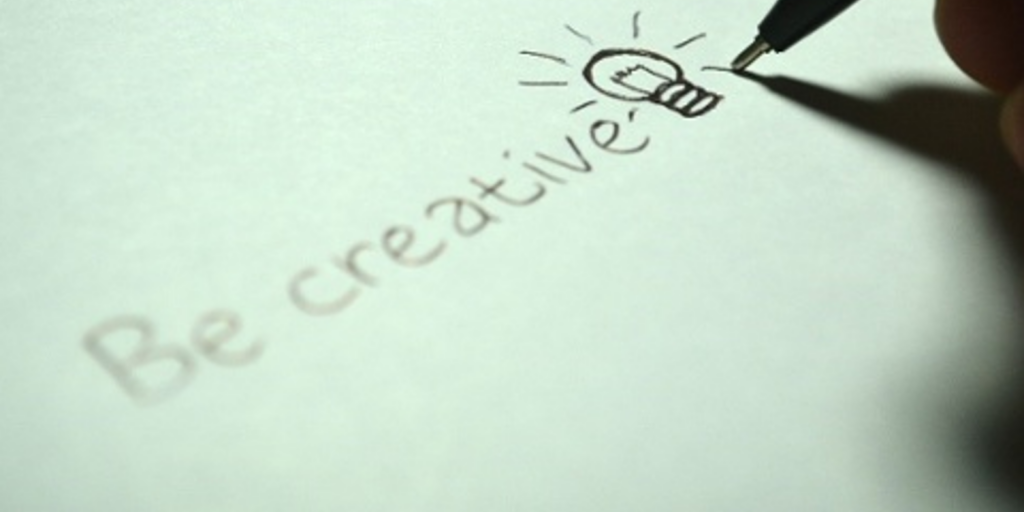As people who are tasked with creative thinking and expression, we know that creativity can often feel uncontrollable, like you’re either in the creative groove…or you’re not. While we’ve previously busted the myth that creativity isn’t an inherent trait, we’re going to dive into some fixes for those times it feels like you’ve got the equivalent of a creative “cold.” For insight, we spoke with Caitlin—from Caitlin in Progress—a multi-talented “creative” (she’s a musician, writer, and painter!). Here are her top 5 ways for getting those creative juices flowing again—along with 3 of the DMA team’s favorite ways to get re-inspired in the midst of a creative block.
Five Tips from an Artist on Handling a Creative Slump
- Go for a walk—or find some other way to be active. The point of this is that your brain will start to focus on the activity you’re doing and on processing your surroundings, instead of fixating on the project you’re stuck on. You’ll probably still want to think about your creative block, but try to focus instead on things that you can tangibly feel, see, and/or control, like your heart rate, your breathing, how your body feels while it’s moving, and taking in your environment. Exercise might not be your “thing,” but even a walk will help provide your brain with a breather from staring at a blank drawing board. And, if you happen to be dealing with a block that keeps you up at night, more strenuous activity can even help tucker out your brain enough to shut off, so you can start anew the next day.
- Listen to music in another language—A lot of us use music to motivate us or help with concentration while working, but sometimes (especially if you’re writing or brainstorming) the lyrics can start to be a distraction from what we’re trying to say (…and there’s nothing like giving a presentation and finding surprise lyrics from the Lizzo song you were listening to while writing it…). This is how music in another language—one that you don’t speak or understand—can help! It will still provide your brain the uplift, inspiration, and background noise you are seeking without risking distraction, since your brain will no longer try to keep up with all the lyrics it feels like it’s supposed to be processing.
- Turn work upside down—This tip works literally if you happen to be stuck on a painting, but for other pursuits, it works in more of a figurative sense. The purpose is to rearrange and reframe your current project in order to look at it from another point of view. If you look at a project differently, it’s easier to reveal where you need to go because your brain stops getting stuck on the process being so “linear.” Pertinent examples include chopping a piece of writing into sections and then reading and arranging them independently from one another, or working on a different portion of a project (such as one that might traditionally come later) instead of staying stuck on “step one.”
- Work with a new tool or medium—This tip can also seem most relevant to art at first glance, but it applies to other creative projects too. Basically, the idea is to find something that excites you enough to “play a little” with whatever you’re working on. This could come in the form of investigating a new software or platform to host a promotion you’re stuck on, drafting in a new newsletter template, or even writing on a whiteboard with lots of fun markers instead of typing.
- Get out of autopilot—In order to break routine, it’s important to have new experiences and create new trains of thought. This could be as simple as going to a different store the next time you go grocery shopping, taking a different route home, watching a comedy show instead of listening to your usual serious podcast, or even just calling someone on your walk (instead of stewing over your creative block). New experiences often lead to breakthrough because they provide your brain with new context and inspiration to help generate ideas.
3 Ways the DMA Team Gets Inspired
- Brainstorms
We’ve found that our team is often the best resource when we’re working on a project that has us stumped. After all, it only takes one good idea to lead to a breakthrough—and brainstorms tend to generate plenty!
- Consume!
Take a step back from producing, and instead, make it a point to consume through your favorite creative medium, whether in nature, art, music, literature, a movie, or even a podcast. Listening to or looking at other creative sources gives your brain a break from so earnestly trying to find a way to get from Point A (portion of the project you’ve completed) to Point B (your desired result. Think of it this way: when your brain is stuck on something, it can begin to operate like a hamster wheel, continuing to revisit thoughts it has already had. Providing something else to consume can help new ideas surface. - Get it Out
Sometimes, you just have to get all your bad ideas out before you find what you’re looking for—this isn’t failure! Keep going back to the drawing board (whether figuratively or literally) and playing with what you’ve created until you achieve the result you had imagined (or an even better version).
Some of the above might seem counterintuitive—especially when you’re working on deadline—but trust us: trying to force creativity is about as useful as watching a pot boil…and will almost inevitably waste more time while generating subpar results. Basically, think of this list as a tool you should implement the way you would wisdom from Mr. Miyagi: as you face creative blocks and your brain just needs a break, try to (very) consistently implement these practices—and watch those creative blocks come tumbling down.
Have something to add? Leave us a comment below or reach out to us on Twitter @TheCoreBlog!
{{cta(‘fbc3d34f-cf67-49f8-9826-6a9a4c06733c’)}}












